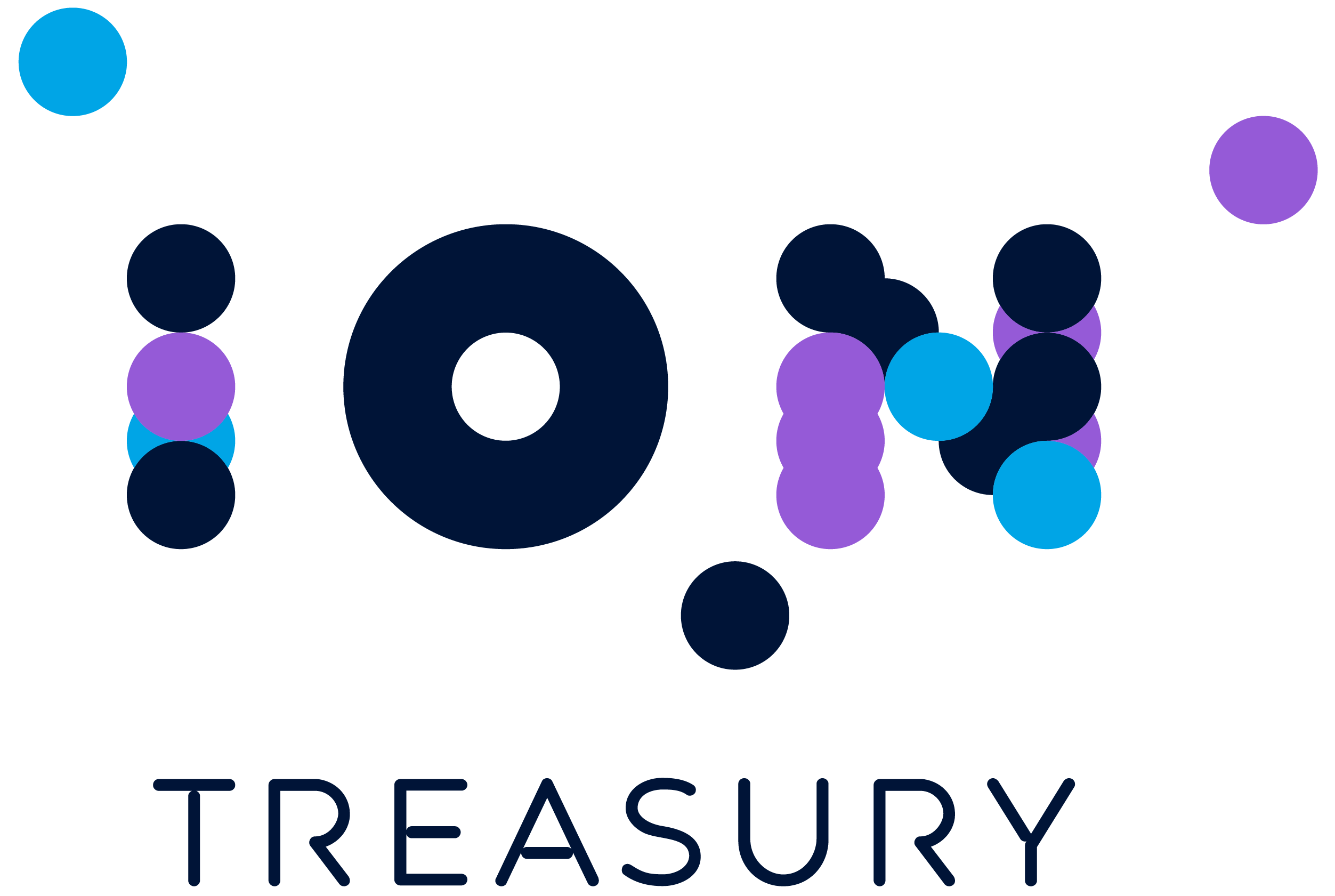Strategic insights into efficient bank relationship management
In the wake of increased scrutiny of corporate finances, there has been a growing focus on executive accountability for a company’s financial operations. Regulatory frameworks, particularly in the US and the EU, have been established to ensure that companies and their executives effectively and securely control their operations. The consequences of failure are severe, ranging from jeopardizing a company’s financial stability to risking executives’ careers, accompanied by stringent penalties and potential legal consequences.
Despite the heightened emphasis on audits and compliance to uncover financial abuses, the management of bank accounts has notably lagged behind in terms of tracking and maintenance. Several factors contribute to this discrepancy:
- Globalization and complexity: Companies, in their pursuit of global markets, establish numerous banking relationships worldwide. The complexity of managing these relationships increases due to differences in regulations and processes across countries, shaped by local customs and laws.
- Diverse processes and compliance requirements: Each bank relationship involves its own set of processes for opening, closing, and maintaining accounts. The multitude of forms, varied formats of company mandates, and internal compliance requirements add to the intricacy of managing bank relationships.
- Manual processes and local systems: Traditionally, companies have relied on manual processes or local systems that lack scalability across geographies and business units for provisioning and managing accounts and personnel access rights/responsibilities.
- Personnel turnover and organizational changes: The volatile nature of personnel turnover and organizational restructuring, coupled with frequent bank account and relationship changes, makes timely control of these details a complex and time-consuming task.
Due to these challenges, companies often lack real-time visibility into their complete inventory of bank accounts and the corresponding personnel access across various banks and departments. Consequently, they may struggle to ensure compliance with internal guidelines or detect breaches in operational reliability and security.
Taking an active role in managing bank relationships can yield substantial benefits for companies. Streamlining the time-consuming manual tasks associated with bank relationship processes is a crucial starting point. Reducing the time and fees involved in organizing annual bank account audits from months to hours can have a significant impact. Moreover, gaining a deeper understanding of the overall relationship with each bank enables corporations to negotiate fees more effectively, considering the diverse range of services banks offer beyond cash management.
Effective bank relationship management not only mitigates risks and ensures compliance but also positions companies to leverage their global banking relationships strategically, benchmark fees, and optimize internal operations. The payback for such proactive management is evident in increased efficiency, cost savings, and improved negotiation power in the broader spectrum of financial services provided by banks.
Process of efficient bank communication
Efficient bank communication is essential for smooth financial operations and effective treasury management. It is an ongoing process that requires proactive engagement, leveraging technology, and maintaining strong relationships with banking partners to support the company’s financial goals.
The process involves ten key steps to ensure seamless interaction between a company and its banking partners:
- Assessment of banking needs: Conduct a thorough assessment of the company’s banking needs, including transaction volumes, types of services required, and the complexity of financial transactions.
- Identification of key banking partners: Identify and select banking partners that align with the company’s financial goals, services needed, and geographic presence. Consider factors such as reputation, reliability, and the range of services offered.
- Establishment of communication protocols: Define clear communication protocols with banking partners, including preferred channels (email, secure online portals, phone), designated contacts, and the frequency of communication.
- Adoption of digital banking tools: Embrace digital banking tools and platforms provided by financial institutions. This includes online banking portals, mobile applications, and other digital channels that facilitate real-time access to account information and transactions.
- Integration with treasury systems: Integrate banking communication tools with the company’s treasury management system (TMS) for seamless data exchange and automation of financial processes. This integration improves efficiency and reduces manual errors.
- Secure data exchange: Prioritize security in data exchange with banks. Utilize secure and encrypted channels to transmit sensitive financial information, reducing the risk of unauthorized access or data breaches.
- Regular communication and updates: Establish regular communication schedules with banking partners to discuss account activities, address queries, and stay informed about new products or services. Regular updates help build strong relationships and ensure alignment with financial objectives.
- Real-time reporting and monitoring: Leverage real-time reporting and transaction monitoring tools provided by banks. This allows the company to track account activities, monitor cash flows, and detect any irregularities promptly.
- Collaboration for problem resolution: Foster a collaborative approach in addressing any issues or discrepancies. Establish clear escalation procedures for problem resolution, ensuring that concerns are addressed in a timely and effective manner.
- Periodic review and optimization: Conduct periodic reviews of bank communication processes to identify areas for improvement. Stay abreast of new banking technologies and services that could enhance efficiency and optimize the overall banking relationship.
KEY TAKEAWAYS
- Globalization, diverse compliance requirements, manual processes, and organizational changes contribute to the complexity of managing bank relationships.
- Proactively managing bank relationships can streamline processes, reduce audit times, improve fee negotiation, and enhance overall financial efficiency.
- Establishing clear protocols, leveraging digital tools, ensuring secure data exchange, and fostering collaboration are vital steps in efficient bank communication.
Managing bank account signatories
Companies must navigate through a maze of regulations, compliance requirements, and internal protocols to ensure that the right individuals have appropriate access to banking accounts. Failure to manage signatories effectively can lead to compliance breaches, operational disruptions, and financial risks.
Key considerations in managing bank account signatories include:
- Clear policies and procedures: Establishing clear policies and procedures for appointing, updating, and removing signatories is essential. These guidelines should outline the criteria for selecting signatories, the documentation required, and the approval process.
- Segregation of duties: Implementing segregation of duties helps prevent fraud and errors by distributing responsibilities among multiple individuals. Assigning different roles, such as account initiation, approval, and reconciliation, to distinct personnel enhances accountability and oversight.
- Regular reviews and updates: Conducting regular reviews of signatory arrangements ensures alignment with organizational changes, regulatory requirements, and best practices. Updates should be promptly made in response to personnel changes, shifts in responsibilities, or shifts in business priorities.
- Documentation and record-keeping: Maintaining comprehensive documentation of signatory appointments, changes, and approvals is crucial for audit trails and compliance purposes. Documented evidence of authorization and oversight strengthens internal controls and regulatory compliance.
- Training and awareness: Providing training and awareness programs to employees on their roles and responsibilities as signatories fosters a culture of accountability and compliance. Ensuring that signatories understand their obligations and the potential consequence of non-compliance enhances organizational resilience.
Bank fee analysis
With a multitude of banking services and fee structures available, companies must conduct comprehensive analyses to identify cost-saving opportunities, negotiate favorable terms, and streamline financial processes.
Key components of bank fee analysis include:
- Fee identification and categorization: Identifying and categorizing bank fees is the first step in conducting a comprehensive analysis. This involves reviewing account statements, fee schedules, and service agreements to identify recurring and ad-hoc charges associated with various banking services.
- Cost-benefit evaluation: Assessing the cost-benefit of bank fees helps prioritize expenditures and allocate resources effectively. Companies should evaluate the value derived from each banking service against its associated costs, considering factors such as efficiency gains, risk mitigation, and strategic alignment.
- Benchmarking and comparison: Benchmarking bank fees against industry standards and competitor offerings provide valuable insights into market trends and best practices. By comparing fee structures, service levels, and contractual terms, companies can identify opportunities for cost optimization and service enhancement.
- Negotiation and optimization: Armed with insights from fee analysis and benchmarking, companies can negotiate with banks to secure competitive rates, waive or reduce fees, and customize service packages to better meet their needs. Proactive negotiation strategies, backed by data-driven insights, enable companies to optimize their banking relationships and drive bottom-line results.
- Monitoring and review: Continuous monitoring and review of bank fees are essential to ensure alignment with evolving business requirements and market conditions. Regularly reviewing fee structures, service usage patterns, and contractual terms enables companies to identify potential cost-saving opportunities, address inefficiencies, and adapt to changing circumstances.
FBAR reporting
FBAR (Foreign Bank Account Report) reporting is a critical compliance requirement imposed by the US Department of Treasury’s Financial Crimes Enforcement Network (FinCEN) to combat money laundering, tax evasion, and other financial crimes. US persons, including citizens, residents, and entities, with financial interests in or signature authority over foreign financial accounts exceeding certain thresholds, must file FBAR annually.
Key considerations for FBAR reporting include:
- Reporting thresholds: Understanding the reporting thresholds is essential for determining FBAR filing requirements. As of the latest guidance, US persons must file FBAR if the aggregate value of their foreign financial accounts exceeds $10,000 at any time during the calendar year.
- Reportable accounts: FBAR reporting applies to a wide range of foreign financial accounts, including bank accounts, brokerage accounts, mutual funds, and certain types of retirement accounts held outside the United States. US persons with signature authority over foreign accounts or beneficial ownership interests are subject to FBAR reporting obligations.
- Filing deadlines and procedures: FBAR must be filed electronically through the FinCEN’s BSA E-Filing System by April 15th following the end of the calendar year. The filing deadline may be extended to October 15th upon request. Failure to timely file FBAR can result in significant penalties and enforcement actions by regulatory authorities.
- Penalties for non-compliance: Non-compliance with FBAR reporting requirements can result in civil penalties, criminal prosecution, and forfeiture of assets. Penalties for willful violations may include fines of up to $100,000 or 50% of the account balance, whichever is greater, per violation. Non-willful violations may incur penalties of up to $10,000 per violation.
- Record-keeping and documentation: Maintaining accurate records and documentation of foreign financial accounts is essential for FBAR compliance. US persons should retain supporting documentation, account statements, correspondence, and other relevant records to substantiate their reporting obligations and respond to inquiries from regulatory authorities.
KEY TAKEAWAYS
- Clear policies, segregation of duties, regular reviews, and documentation ensure effective management of bank account signatories, mitigating risks and ensuring compliance.
- Thorough fee identification, cost-benefit evaluation, benchmarking, negotiation, and continuous monitoring optimize resources, drive cost savings, and enhance service quality.
- Strategic negotiation based on fee analysis and benchmarking allows companies to secure competitive rates, customize services, and adapt to market changes for optimal banking relationships and bottom-line results.
Strategies for negotiating banking services: Unlocking value in financial partnerships
Negotiating banking services is a nuanced art that goes beyond routine transactions. It involves strategic planning, clear communication, and a keen understanding of both the company’s financial needs and the offerings of banking partners. In this table, we delve into key aspects of negotiating banking services, from understanding the full scope of offerings to navigating successful negotiations and evaluating the benefits of exclusive arrangements. Each question explores a critical facet of the negotiation process, providing insights to empower companies in unlocking optimal value in their financial partnerships.
| Question | Answer |
| What steps should a company take to understand the full scope of banking services and offerings? | To understand the complete range of banking services, companies should conduct a thorough review of their current and potential banking partners. This involves assessing services beyond basic transactions, such as treasury management, trade finance, and electronic banking. Engaging in discussions with bank representatives and attending informational sessions can provide valuable insights into the breadth of available offerings. |
| What are the critical factors that companies should consider when negotiating banking agreements? | When negotiating banking agreements, several factors come into play. Key considerations include the terms of the agreement, fee structures, interest rates, service level agreements (SLAs), and the flexibility of services to accommodate the company’s evolving needs. Additionally, understanding the bank’s reputation, financial stability, and responsiveness to client needs is paramount for a successful negotiation. |
| What techniques can companies employ to secure competitive rates and fees from their banking partners? | Securing competitive rates and fees involves a strategic approach. Companies should conduct market research to understand industry benchmarks, use this data as leverage during negotiations, and consider bundling services for potential cost savings. Additionally, demonstrating a strong and consistent financial standing enhances the company’s negotiating position, encouraging banks to offer more favorable terms. |
| How can companies navigate the negotiation process effectively to ensure successful outcomes? | Successful banking service negotiations require a well-prepared and proactive approach. This includes clearly defining the company’s needs and objectives, maintaining open communication with the bank, and being willing to explore alternative solutions. Establishing a collaborative relationship rather than adopting an adversarial stance can lead to mutually beneficial outcomes for both the company and the bank. |
| What factors should companies consider when evaluating the benefits of exclusive banking arrangements? | When assessing the benefits of exclusive banking arrangements, companies should evaluate the comprehensiveness of services, cost-effectiveness, and the potential for customized solutions. Exclusive arrangements often provide opportunities for preferential treatment, streamlined operations, and dedicated support. However, companies should carefully weigh these benefits against the potential limitations, ensuring that exclusivity aligns with their long-term financial strategy. |
While regulatory frameworks provide a robust foundation for accountability, there remains an often-overlooked realm in the financial landscape—the management of bank relationships.
The narrative doesn’t end with challenges; it extends to strategic solutions. Taking an active role in managing bank relationships emerges not only as a risk mitigation strategy but as a catalyst for enhanced efficiency, cost savings, and improved negotiation power. The process outlined for efficient bank communication serves as a blueprint for companies looking to navigate the intricate world of financial operations seamlessly.
The financial landscape demands a proactive stance—one where companies actively manage their bank relationships, leverage digital tools, and employ strategic negotiation techniques. The dividends of such proactive management are not merely in compliance but in the substantial benefits of increased efficiency, cost savings, and fortified negotiating positions in the dynamic world of banking services. As companies embark on this journey, they find themselves not only weathering the financial seas but thriving in them.

Don't miss out
Subscribe to our blog to stay up to date on industry trends and technology innovations.



